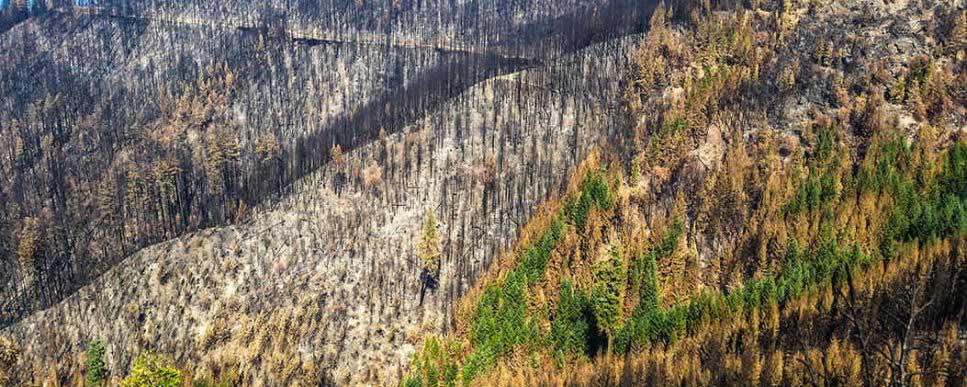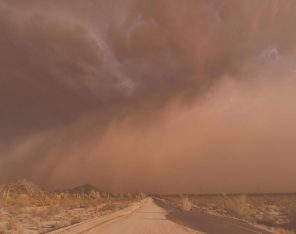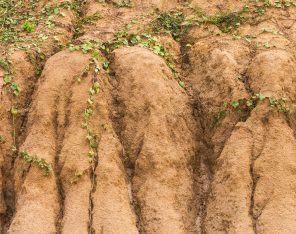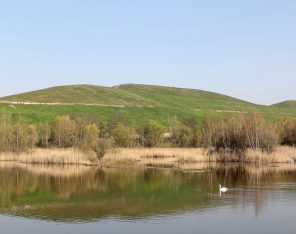
Post Fire Erosion & How to Manage It

After wildfires are extinguished, not much about the blaze will be broadcast in the headlines after firefighters go home. After a fire, whether it is a wildfire or controlled burn, changes the environment and habitat in and around the burn site, with one area of interest and concern being the soil. The consumption of trees, shrubs, grasses and foliage changes the susceptibility of the underlying soil to the erosive forces of wind and water events.
Immediate erosion control is required after a large fire event to prevent mudslides, manage storm water pollution due to ash, silt and sediment, and protect environmentally sensitive areas. Erosion control should be designed to achieve the following:
- Prevent erosion and harmful runoff
- Stabilise areas to prevent further disaster and prevent from post-burn danger
- Establish quick vegetation cover in all areas
Almost always, erosion control following a large fire event is necessary before the next rainfall. Ash in water increases the pH to unhealthy levels for marine life, while sediment fills up reservoirs, reducing their ability to effectively store fresh and clean water. Mudslides wreak havoc, displacing homes from their foundations, burying them and causing bodily harm to human life, with disastrous results.
With fires that have a burn severity upwards of moderate, scorching the seed bank and killing all microbial life in the soil, nature may take up to twenty years to repair itself compared to two to five years for low-severity burns.
Stabilisation Works
The objective of stabilisation works post fire is to quickly establish ground cover to protect from raindrop splash, increase infiltration to slow surface runoff velocity and to bind soil particles together.
The most common form of batter and hillside stabilisation in through reseeding utilising hydromulching methods. Hydromulching HGM and Hydromulching BFM are especially effective on large, hard-to-reach or sloping areas. This process of revegetation has the added benefits of specialized Growth Medium additives that stimulate faster and more sustainable vegetation growth.
Hydromulching revegetation solutions utilised in combination with a topsoil alternative, such as EnviroSoil® BSA, achieves superior erosion control and creates an optimum growing environment. Biotic Soil Amendments consist of soil builders and growth stimulants which act to replenish the soil beneath with much needed nutrients and improve the soils ability to support long term growth, all while promoting erosion control and soil stabilisation.
Aggressive invasive species can overtake burned ground and threaten wildlife habitat before native vegetation has a chance to re-establish. Utilising native seeds in the area is favorable with the addition of a cover crop. A cover crop will establish quickly and work to provide a root system that will stabilise the soil by holding it together, counteracting the effects of soil erosion due to overland water flow and wind until new seedlings have established. Common cover crops include ryegrass, Japanese millet and ryecorn, all which provide excellent coverage for emerging grass.
Depending on the gradient and length of the batter will determine the application method, whether it be by aerial or hydroseeder.
Post Vegetation Monitoring
It is critical that monitoring be put in place once revegetation efforts have been undertaken. Post project, we are able to monitor and gain a deeper understanding on the plant health and vigor of the remediated site allowing us to maximise growth efficiency. The utilisation of drones allows for early identification and mitigation of whether there is any need for remedial action.





